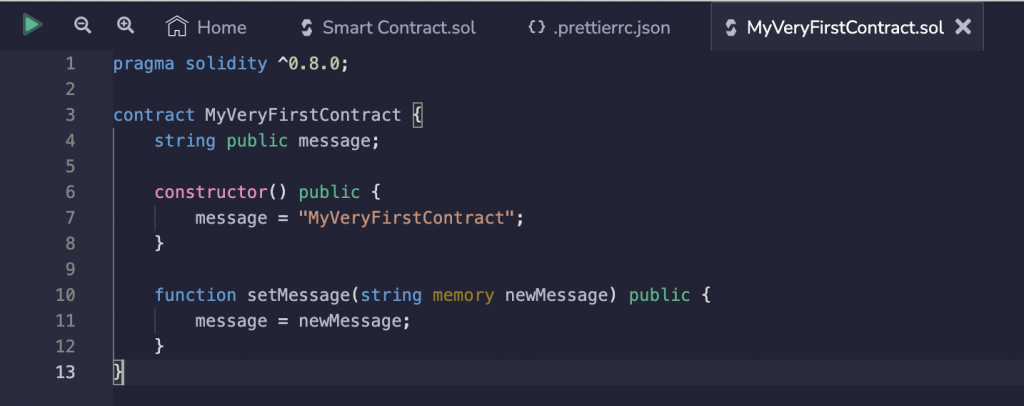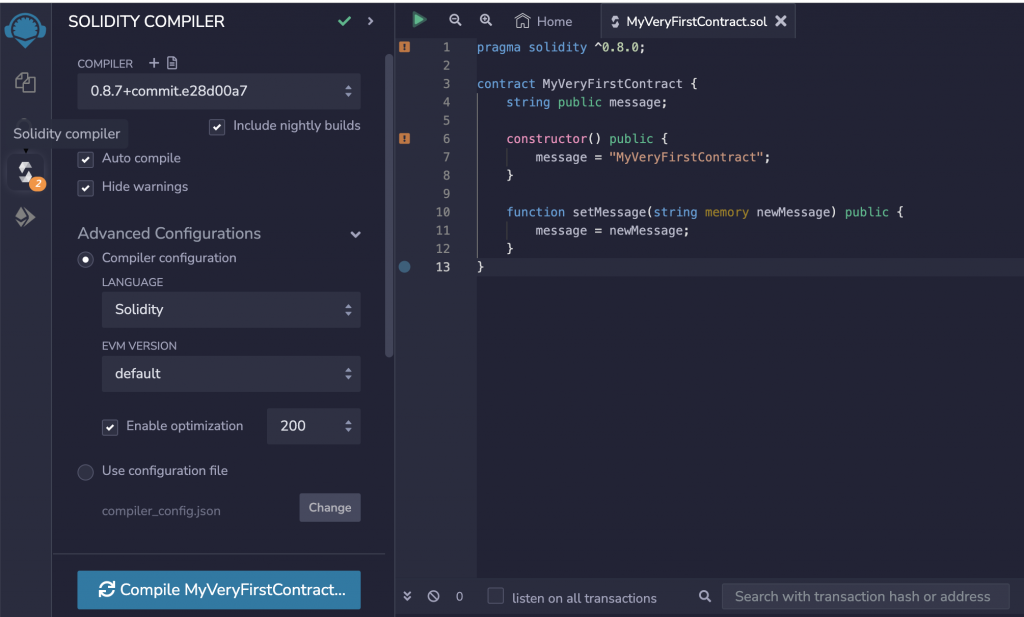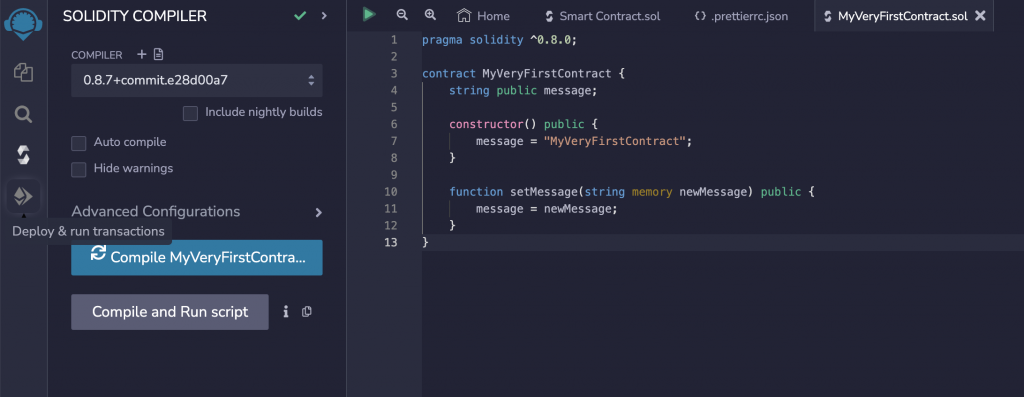Embarking on smart contract creation within Ethereum’s blockchain landscape can be daunting, especially for newcomers. This article, based on WeSoftYou’s expertise in Web3 software development services, guides you through the essential steps of crafting a secure smart contract, demystifying the process and offering valuable insights.
Key Takeaways:
- Smart Contracts & Ethereum Significance: Unraveling the importance of smart contracts within Ethereum’s ecosystem, providing tamper-proof agreements through Solidity programming.
- Building Your First Smart Contract: A step-by-step guide, covering the initial setup, writing Solidity code, compilation, deployment, and interaction with your smart contract on the Ethereum blockchain.
- WeSoftYou Expertise: Leveraging WeSoftYou’s experience, with over 70 projects, including the creation of a secure smart contract for the CryptoCossacks NFT avatar collection.
- Bonus Tips from CTO: Insights from WeSoftYou’s CTO, Andrew Kovalchuk, offering valuable advice for smart contract development, emphasizing technology choices, project planning, flexibility, and user-centric considerations.
How to Build Your First Smart Contract in Solidity
Follow a comprehensive guide covering the significance of smart contracts, steps to build your first contract using Solidity on Remix IDE, insights from WeSoftYou’s expertise, and bonus tips from CTO Andrew Kovalchuk for successful smart contract development.
Ethereum operates on blockchain technology that allows for secure, transparent, and tamper-proof transactions between parties. In contrast to traditional databases, which are centralized and rely on third-party servers to store data, blockchain technology is powered by a peer-to-peer network of computers. This means that all data is stored on individual nodes and is accessible by every participant in the network.
This article will show you how to create your first rudimentary smart contract using Solidity. Finally, we’ll deploy the contract to the Ethereum blockchain.

Building a smart contract can initially seem daunting, but with the right tools and some know-how, it’s a relatively straightforward process.
Step 1: Download and Install Development Environment
We’ll walk you through the steps of building your first smart contract using the Remix IDE, a popular tool for developing and testing smart contracts. So, how to use Remix IDE.
Remix is a web-based IDE (Integrated Development Environment) that allows you to write, test, and deploy smart contracts on the Ethereum blockchain. It is easy to use and has a user-friendly interface, making it a great choice for beginners.
Step 2: Open a Solidity-Compatible Editor
To get started with Remix, simply go to the website and open the IDE. Once you’re in the IDE, you can begin to set up your development environment. This includes selecting the compiler version and environment, as well as setting up any necessary plugins or libraries.
Step 3: Write the Smart Contract Code in Solidity
Solidity is the most popular programming language for writing smart contracts on the Ethereum blockchain. It is similar to JavaScript, making it easy to learn for those with a background in programming. In Remix, you can start writing your smart contract code in the editor on the left-hand side of the screen. You can also import libraries, other contract files and call the functions from other contracts.

This smart contract, called “MyVeryFirstContract,” has a single public variable called “message” that is of type “string.” The contract also has a constructor function that is executed when the contract is deployed, which sets the initial value of the “message” variable to “MyVeryFirstContract”. Additionally, there is a public function called “setMessage” that allows you to change the value of the “message” variable by passing in a new string value.
This is a very basic example, but it should give you an understanding of the structure of a smart contract and how you can start building your own.
You can start by customizing the above contract and writing your own logic to suit your needs. Remember to always thoroughly test your code before deploying it to the mainnet.
Step 4: Compile the Smart Contract Code
Once you’ve written your smart contract code, you’ll need to compile it. This step is necessary to ensure that your code is error-free and ready to be deployed. In Remix, you can do this by clicking the “Compile” button.

Step 5: Deploy the Smart Contract to the Blockchain Network
Now that your smart contract code is compiled and ready to go, you can deploy it. In Remix, you can deploy your smart contract by clicking the “Deploy” button.

Step 6: Interact with the Smart Contract on the Blockchain Network
Once your smart contract is deployed, you can interact with it by calling its functions and sending transactions. To do this, you can use Remix’s built-in “Run” tab, where you can test your contract’s functionality and see the results of your interactions on the blockchain network.
Conclusion
With the right tools and a bit of know-how, anyone can build and deploy their first smart contract on the Ethereum blockchain. Remember to always test your contract before deploying on mainnet.
If you are still getting ready to create your smart contract and want to find an experienced contractor, our experts will help you cover your needs.
Finally, we have a bonus for you. These are some tips from our CTO, Andrew Kovalchuk, who has created plenty of smart contracts. These tips are worth a lot.
- Do not resort to specific technologies during development without an extra need. Especially if there is no massive budget for the development of this technology. Try to choose widely adopted technologies with a large base of developers and end-users.
- Plan the technical part of the project two steps ahead, but not 10, especially at the beginning. Premature optimization, in most cases, is harmful and only increases the complexity of the project and the amount of code that needs to be changed and maintained when the product changes.
- In the first stages, you can simplify some system elements and make it flexible enough to change. You will most likely rewrite your smart contract several times before public release.
- Ask uncomfortable questions about the product. How will it be more convenient / cheaper for the end-user? How should the system respond to non-standard cases?
- You don’t need plenty of automated tests. Tests are essential, especially when writing a smart contract. But at the initial stages, if the concept of your application can still change several times globally, it’s not worth investing a lot of time and money because your tests can become irrelevant in just a few weeks.
FAQ
Solidity is a programming language designed to create smart contracts on the Ethereum blockchain. It is similar to JavaScript but has been specially designed for this purpose.
Ethereum is a more fully-featured smart contract platform than Solidity. Ethereum also has a built-in programming language called Solidity. This language allows you to write smart contract code more intuitively and enforceably than with Solidity alone.
Yes, Ethereum can be used for smart contracts. Ethereum’s smart contract platform is fully-featured and has a built-in programming language that makes coding smart contracts easier.





















